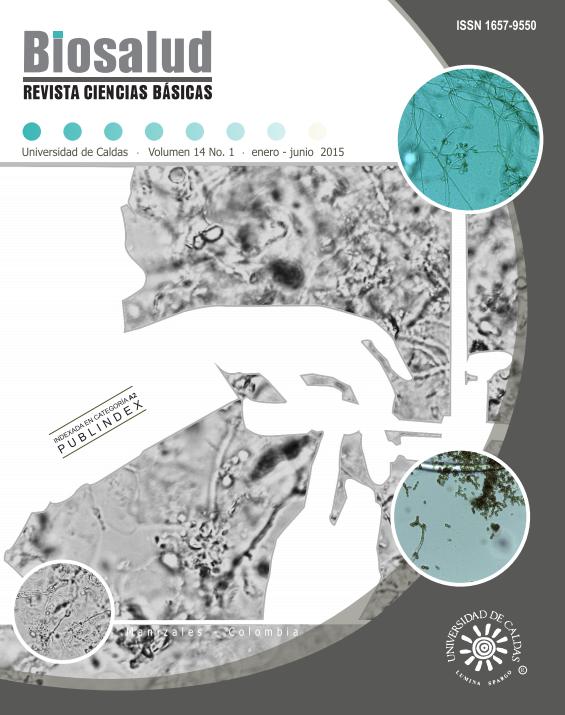Autores/as
Resumen
Introducción: Los estudios in vitro, que buscan intermediarios de la degradación mitocondrial de ácidos grasos, facilitan el diagnóstico de alteraciones hereditarias o adquiridas en esa ruta metabólica. Objetivo: Analizar la producción de metabolitos en fibroblastos de pacientes con deficiencia de acil-CoA deshidrogenasa de cadena muy larga (VLCAD) con afectación muscular, incubados con ácido oleico deuterado. Materiales y Métodos: Se incubaron fibroblastos de tres pacientes con deficiencia de acil-CoA deshidrogenasa de cadena muy larga (VLCAD) con cardiomiopatía y de 10 controles en presencia de ácido oleico deuterado. Resultados: Se encontró un perfil característico luego de la incubación de fibroblastos con esta deficiencia. Conclusión: Este sustrato podría ser usado para realizar diagnóstico in vitro de la deficiencia de VLCAD con afectación muscular.
Palabras clave
Citas
2. Kler RS, Jackson S, Bartlett K, Bindoff LA, Eaton S, Pourfarzam M, et al. Quantitation of acyl-CoA and acylcarnitine esters accumulated during abnormal mitochondrial fatty acid oxidation. J Biol Chem 1991; 266:22932-38.
3. Nada MA, Chace DH, Sprecher H, Roe CR. Investigation of ß-oxidation intermediates in normal and MCAD deficient human fibroblasts using tandem mass spectrometry. Biochem Mol Med 1995; 54:59- 66.
4. Ventura FV, Costa CG, Struys EA, Ruiter J, Allers P, Ijlst L, et al. Quantitative acylcarnitine profile in fibroblasts using U-13Cpalmitic acid: an improved tool for the diagnosis of fatty acid oxidation defects. Clin Chim Acta 1999; 281:1-17.
5. Lowry OH, Rosebrough NJ, Farr AL, Randall RJ. Protein measurement with the Folin phenol reagent. J Biol Chem 1951; 193:265-75.
6. Osorio JH. Producción de metabolitos en fibroblastos incubados con ácido oleico deuterado. Archiv Med (Manizales) 2013; 13(2):202-207.
7. Aoyama T, Ueno I, Hashimoto T. Rat very-long-chain acyl-CoA dehydrogenase, a novel mitochondrial acyl-CoA dehydrogenase gen product, is a rate-limiting enzyme in long-chain fatty acid β-oxidation system. The cDNA and deduced amino acid sequence and distinct specificities of the cDNA-expressed protein. J Biol Chem 1994; 269:19088-94.
8. Aoyama T, Uchida Y, Kelley RI, Marble M, Hofman K, Tonsgard JH, et al. A novel disease with deficiency of mitochondrial very-long-chain acyl-CoA dehydrogenase. Biochem. Biophys Res Commun 1993; 191:1369-72.
9. Izai K, Uchida Y, Orii T, Yamamoto S, Hashimoto T. Novel fatty acid β-oxidation enzymes in rat liver mitochondria. I. Purification and properties of very-long chain acyl-coenzyme A dehydrogenase. J Biol Chem 1992; 267:1027-33.
10. Aoyama T, Souri M, Ushikubo S, Kamijo T, Yamaguchi S, Kelley RI, et al. Purification of human verylong-chainacyl- coenzyme A dehydrogenase and characterization of its deficiency in seven patients. J Clin Invest 1995; 95:2465-73.
11. Andresen BS, Bross P, Vianey-Saban C, Divry P, Zabot MT, Roe CR, et al. Cloning and characterization of human very-long-chain acyl-CoA dehydrogenase cDNA, chromosomal assignment of the gene and identification in four patients of nine different mutations within the VLCAD gene. Hum Molec Genet 1996; 5:461-72.
12. Aoyama T, Souri M, Ueno I, Kamijo T, YamagushI S, Rhead WJ, et al. Cloning of human very-longchain acylcoenzyme A dehydrogenase and molecular characterization of its deficiency in two patients. Am J Hum Gen 1995; 57:273-83.
13. Vianey-Saban C, Divry P, Brivet M, Nada M, Zabot MT, Mathieu M, et al. Mitochondrial very-long-chain acylcoenzyme A dehydrogenase deficiency: clinical characteristics and diagnostic considerations in 30 patients. Clin Chim Acta 1998; 269:43-62.
14. Olgivie I, Pourfarzam M, Jackson S, Stockdale C, Bartlett K, Turnbull DM. Very long-chain acyl coenzyme A dehydrogenase deficiency presenting with exercise-induced myoglobinuria. Neurology 1994; 44:467-73.
15. Minetti C, Garavaglia B, Bado M, Invernizzi F, Bruno C, Rimoldi M, et al. Very-long-chain acyl-coenzyme A dehydrogenase deficiency in a child with recurrent myoglobinuria. Neuromuscul Disord 1998; 8:3- 6.
16. Houten SM, Wanders RJ. A general introduction to the biochemistry of mitochondrial fatty acid β-oxidation. J Inherit Metab Dis 2010; 33(5):469-77.
17. Moczulski D, Majak I, Mamczur D. An overview of beta-oxidation disorders. Postepy Hig Med Dosw (Online) 2009; 63:266-77.
18. Kompare M, Rizzo WB. Mitochondrial fatty-acid oxidation disorders. Semin Pediatr Neurol 2008; 15(3):140-9.
19. Osorio JH, Pourfarzam M. Early diagnosis of neurometabolic diseases by tandem mass spectrometry. Acylcarnitine profile from cord blood. Rev. Neurol. 2004; 38(1):11-16.
20. Kølvraa s, Gregersen N, Christiensen E, Hobolth N. In vitro fibroblasts studies in a patient with C6- C10 dicarboxilic aciduria: evidence for a defect in general acyl-CoA dehydrogenase. Clin Chim Acta 1982; 126:53-67.
21. Manning NJ, Olpin SE, Pollit RJ, Webley JA. Comparison of 9.10-3HPalmitic and 9.10-3Hmyristic acids for the detection of defects of fatty acid oxidation in intact cultured fibroblasts. J Inher Metab. Dis 1990; 13:58-68.
22. Olpin SE, Manning NJ, Carpenter K, Middleton B, Pollit RJ. Differential diagnosis of hydroxydicarboxylic aciduria based on release of 3H2O from [9,10-3H]-myristic and [9,10-3H]-palmitic acids by intact cultured fibroblasts. J Inher Metab Dis 1992; 15:883-890.
23. Osorio JH, Lluch M, Ribes A. Analysis of organic acids after incubation with (16-2H3)palmitic acid in fibroblasts from patients with mitochondrial beta-oxidation defects. J Inherit Metab Dis. 2003; 26(8):795-803.

 pdf
pdf
 FLIP
FLIP


















